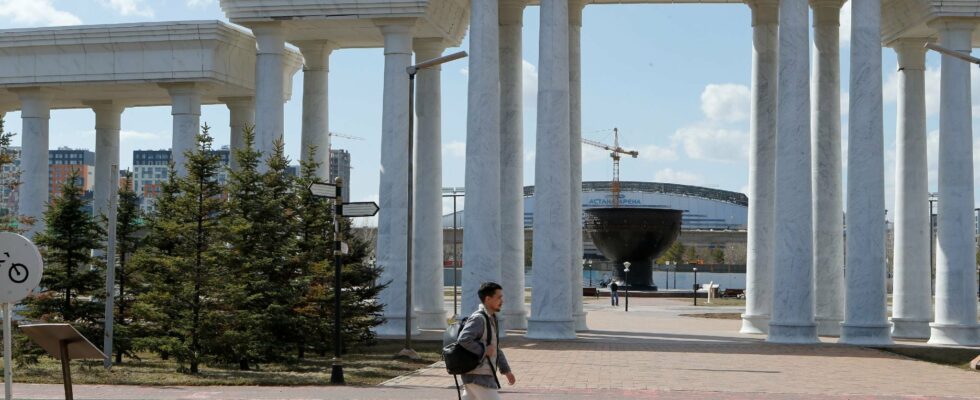On the western shore of Lake Balkhash, the largest in Kazakhstan, a police car from the Russian Federation, with a double-headed eagle emblazoned on the front door, speeds through the alleys of the city of Priozersk. On board is Kamil Kassimov, a Russian deserter who had been living in the former Soviet republic for several months to escape the war in Ukraine. On April 23, officers from the FSB, the Russian intelligence service, came to kidnap him in this Kazakh city co-administered by Russia.
The method had already been tested in Armenia. Two Russian military deserters had been kidnapped by FSB officers in the city of Gyumri where, as in Priozersk, Russia has a military base. A way for the Kremlin to remind that this Central Asian republic, which shares a border of more than 6,000 kilometers with Russia, is not a safe country for the fortnight of deserters hiding there. “A great fear has settled among them,” says Artur Alkhanov, a lawyer at the International Human Rights Bureau in Kazakhstan, who is handling Kamil Kassimov’s case. “We are not sure that Kamil Kassimov is the only one who was kidnapped,” the lawyer says.
Russian military sites in Kazakhstan
Among the population of 17,000 inhabitants of this city composed of nearly two-thirds Kazakhs and 30% Russians, the news has not really caused a stir, nor has it called into question the governance of the city. Here, we rub shoulders every day with Russian soldiers, in civilian clothes or in uniform, doing their shopping at the market and eating “shashliks” (meat skewers) on the terrace in the summer. “Here, it’s friendship between peoples,” Arman, a taxi driver, proudly says. “We’re not afraid of them, they’re civil servants, not armed soldiers,” thinks Alish Eruserov, a construction worker, who has seen his city turn towards tourism with the construction of seaside resorts on the shore of the lake.
After World War II and the beginning of the Cold War, dozens of cities in the USSR were designated as “closed administrative-territorial units” – ZATO, according to the Russian acronym. These cities, the exact number of which is still unknown, housed nuclear missile sites, defense systems or research centers, where weapons of mass destruction were developed.
Priozersk was one of the 13 experimental cities of Kazakhstan, which led to its being wiped off the map until the early 2000s. Only the ruins of the former checkpoint, at the entrance to the city, recalls the time when the city was closed. It remains the property of Russia, which, in exchange for $16 million a year, maintains a military presence in this part of Kazakhstan and continues to operate the Sary-Shagan military range, a million-hectare firing range in the “hunger desert” in the middle of the country. The most recent test took place in April 2024. “Sary-Shagan is regularly used to test ballistic missile defenses,” explains Pavel Podvig, a military analyst for the Russian army. “Once or twice a year, Topol missiles are also fired from another base (Kapustin Yar), located in the Astrakhan Oblast, in the Russian Caucasus.”
In the former Soviet republic, Russia also maintains control of the Baikonur space site, a test station in western Kazakhstan and an aviation regiment based at the Kostanai airfield. In total, Moscow leases 95,727 square kilometres of land in Kazakhstan and retains significant military and economic influence over the country, allowing it to send the FSB to hunt down opponents and deserters.
Memorial of the Special Military Operation
“Without the Russians, this city would never have existed,” sighs Edouard. This former Russian officer, who served his entire career at the Sary-Shagan missile test center, is now in charge of the military museum, inside the “Officers’ House”, a building belonging to Russia. This building alone, still bearing the emblem of the hammer and sickle, tells the story of Kazakhstan’s short century of Sovietization. It houses the greatest symbols of the Soviet Union: books, red flags and even a gold-plated statue of Lenin. With, as a bonus, a small memorial to the “special military operation”, as a continuation of history. On its walls, photos of Vladimir Putin alongside Kazakh President Kassym-Jomart Tokayev recall the latter’s dependence on Russian power.
.
